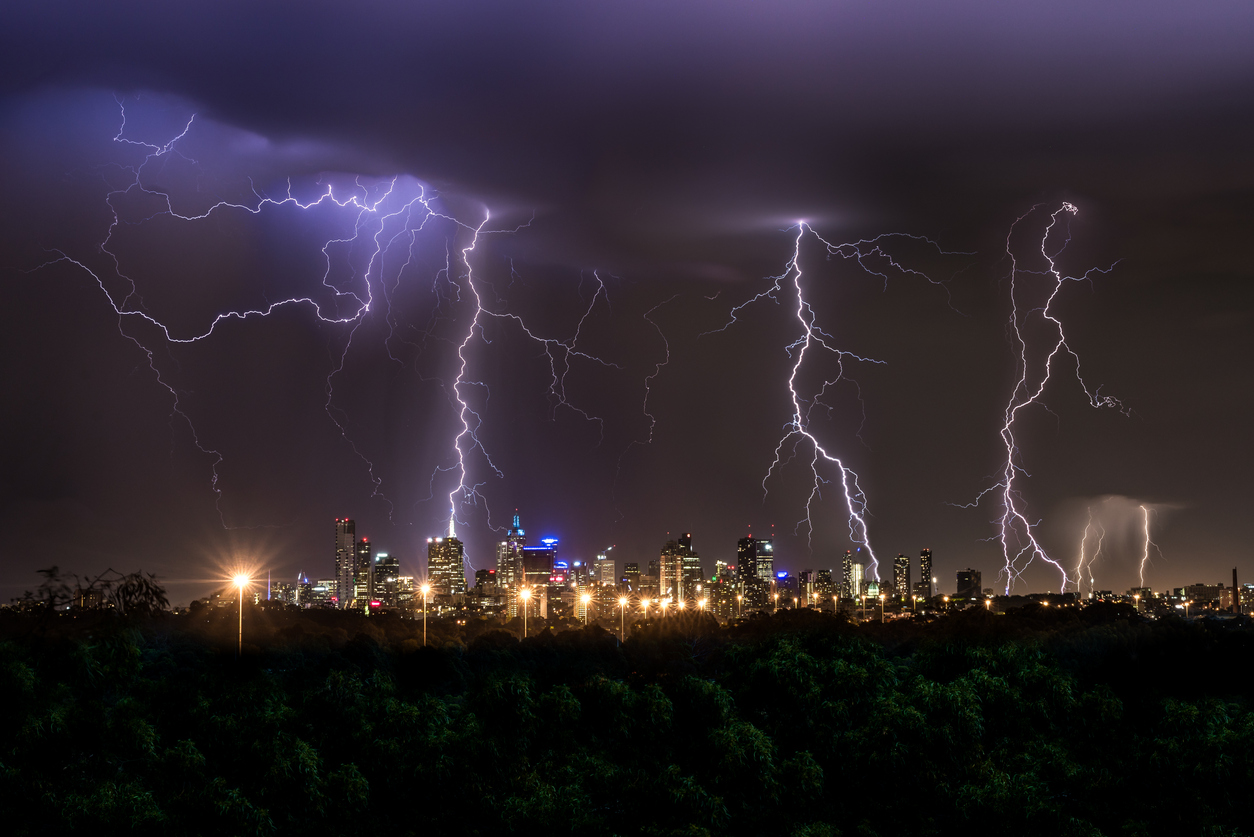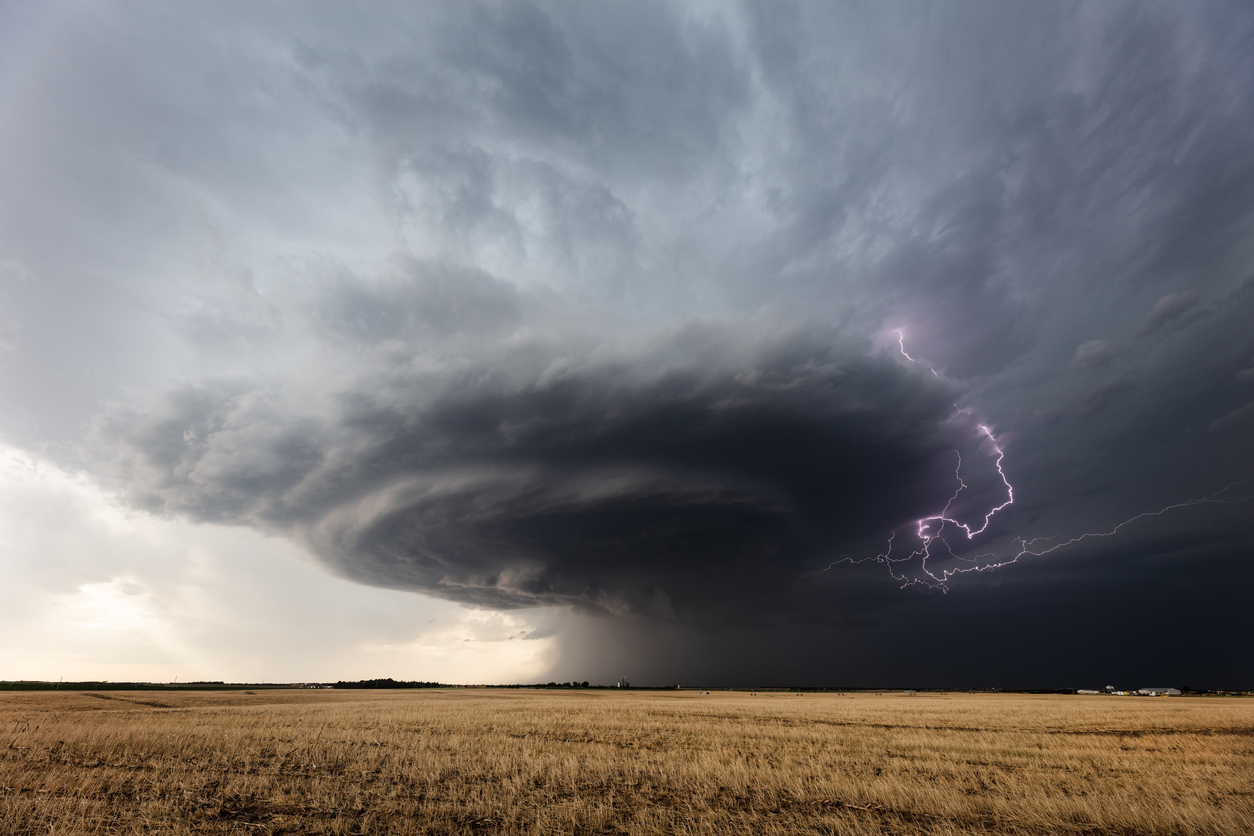News
‹ back to weather news
News
-
What is a supercell thunderstorm?
Ben Domensino, 17 October 2025Some thunderstorms are more dangerous than others and the most violent type of storm is called a supercell, a towering, rotating beast in the sky that can cause destructive winds, giant hail, flash flooding and tornadoes.
What makes a thunderstorm severe?
All thunderstorms create lightning and thunder. However, the Bureau of Meteorology doesn’t issue warnings for lightning because this would mean issuing a warning for every single storm throughout the year.

Image: Lightning over Melbourne. Source: iStock / SW_Photo
Severe thunderstorm warnings are only issued in Australia when a storm becomes intense enough to cause damage to infrastructure or impacts to people. According to the Bureau of Meteorology, a severe thunderstorm in Australia is a storm which produces any one of the following:
- Damaging wind gusts greater than 90 km/h
- Large hail measuring greater than 2cm in diameter
- Heavy rain conducive to flash flooding
- Tornadoes
Even within the select group of thunderstorms that are considered to be severe in Australia, there is a category of storm that stands out above the rest for its potential to cause the most destruction: supercell thunderstorms.
What is a supercell?
A supercell is a type of thunderstorm that rotates, which allows it to grow larger and more intense than most other types of storms.
In a typical non-supercell thunderstorm, the storm grows as air rises in a section of the storm called the updraft. When the rain and hail within this updraft gets too heavy, it starts to fall back towards the ground, creating a downdraft that can cause damaging winds, heavy rain and large hail at the surface. These types of storms often weaken or collapse when the cool downdraft interferes with the warm updraft.
Supercell thunderstorms, however, are storms that have the downdraft displaced from the updraft, which can allow them to grow far more intense and last longer than other storms, sometimes for several hours.
Supercells form when there is sufficient wind shear in the atmosphere, meaning the wind speed increases, and wind direction changes, as you move up through the atmosphere. Wind shear causes supercell thunderstorms to rotate, displacing the updraft from the downdraft.

Image: A supercell thunderstorm in Kansas, USA. Source: iStock / mdesigner125
Supercells often create more dangerous weather than other severe thunderstorms, including any of the following:
- Giant hail measuring more than 5cm in diameter
- Destructive wind gusts exceeding 125 km/h
- Very heavy rain leading to flash flooding
- Tornadoes
Supercell thunderstorms can also move in unusual directions, often turning towards the left or right relative to the background movement of surrounding thunderstorms. This makes them extremely difficult to predict ahead of time.
Supercell thunderstorms happen every year in Australia, particularly during spring and summer.
Check the latest warnings in your area throughout the storm season to stay up to date with any severe thunderstorm activity, including supercells.
- Other news
- Fri 17 Oct 2025 Record October heat possible in at least three states
- Thu 16 Oct 2025 Relief for Victoria after hottest day of spring 2025 to date
- Thu 16 Oct 2025 Severe thunderstorms to hit NSW on Friday
- Wed 15 Oct 2025 Sydney on track for hottest October on record
- Tue 14 Oct 2025 45C possible in Australia this weekend

